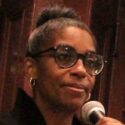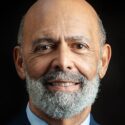 A new study led by researchers at Stanford University finds that there is very little interaction between people in different socioeconomic groups in the nation’s largest cities. Big cities may be more socioeconomically segregated than small cities because they have a larger variety of stores, restaurants, recreation areas, and venues – and these choices cater to narrow socioeconomic brackets.
A new study led by researchers at Stanford University finds that there is very little interaction between people in different socioeconomic groups in the nation’s largest cities. Big cities may be more socioeconomically segregated than small cities because they have a larger variety of stores, restaurants, recreation areas, and venues – and these choices cater to narrow socioeconomic brackets.
The researchers used GPS data collected in 2017 from 9.6 million cellphones across 382 metropolitan areas in the United States to determine how often people of different socioeconomic statuses crossed paths during the day – essentially how many times people had the opportunity to interact, even briefly, with someone in a different income bracket. After inferring each person’s socioeconomic status from estimated rental prices on a real estate marketing website, the researchers counted potential interactions between users over the course of the day – times where two cellphones had GPS pings within 50 meters of each other within a five-minute window. They collected data on almost 1.6 billion path-crossings. Researchers found that people living in the 10 most populous metropolitan areas, which include cities like New York City, Los Angeles, and Chicago, along with their surrounding areas, were significantly less likely to interact with people of different socioeconomic statuses than people in metropolitan areas with fewer than 100,000 residents.
“There is a large variety of choices in big cities. In New York, you can spend $10 on a dinner or $1,000 on a dinner, whereas if you live in a place with only one diner, everyone goes there, rich or poor,” notes Jure Leskovec, co-author of the study and a professor of computer science at Stanford University.
The researchers note that there are ways to build cities to foster more socioeconomic mixing. Looking at large cities, the researchers found that those that placed frequently- visited hubs in between different neighborhoods – instead of in the center of each neighborhood – were less segregated.
“These big cities have managed to foster diverse interactions because the hubs that people visit the most – which turn out to be shopping malls, plazas, and similar places – are between rich and poor neighborhoods,” said Hamed Nilforoshan, a doctoral student and first author on the paper. “Those hubs act as bridges, allowing people to see each other and interact.”
The full study, “Human Mobility Networks Reveal Increased Segregation in Large Cities,” was published in the journal Nature. It may be accessed here.







